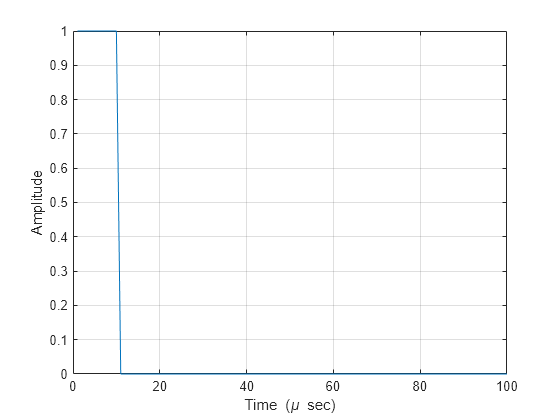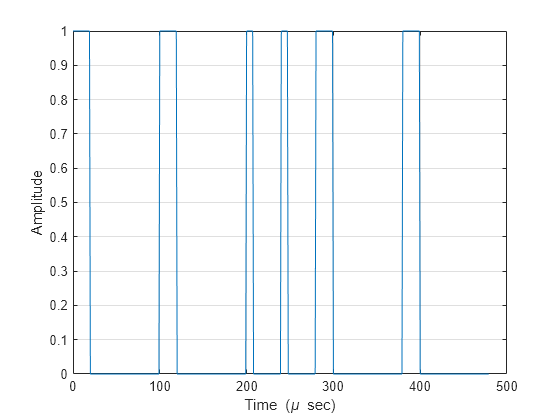phased.RectangularWaveform
Rectangular pulse waveform
Description
To create and use a phased.RectangularWaveform waveforms
Create the
phased.RectangularWaveformobject and set its properties.Call the object with arguments, as if it were a function.
To learn more about how System objects work, see What Are System Objects?
Creation
Description
waveform = phased.RectangularWaveformphased.RectangularWaveform
System object™, waveform, with default property values.
waveform = phased.RectangularWaveform(Name=Value)waveform
System object with each specified property Name set to the specified
Value. You can specify additional name-value pair arguments in any
order as
(Name1=Value1,...,NameN=ValueN).
Properties
Usage
Syntax
Description
Y = waveform()Y.
Y = waveform(freqoffset)freqoffset to generate the waveform with an offset as
specified at step time. Use this syntax for cases where the transmit pulse frequency needs
to be dynamically updated. This syntax applies when you set the
FrequencyOffsetSource property to 'Input
port'.
You can combine optional input and output arguments when their enabling properties are
set. Optional inputs and outputs must be listed in the same order as the order of the
enabling properties. For example, [Y,PRF,COEFF] =
waveform(prfidx,freqoffset).
Input Arguments
Output Arguments
Object Functions
To use an object function, specify the
System object as the first input argument. For
example, to release system resources of a System object named obj, use
this syntax:
release(obj)
Examples
References
[1] Richards, M. A. Fundamentals of Radar Signal Processing. New York: McGraw-Hill, 2005.
Extended Capabilities
Version History
Introduced in R2011a






